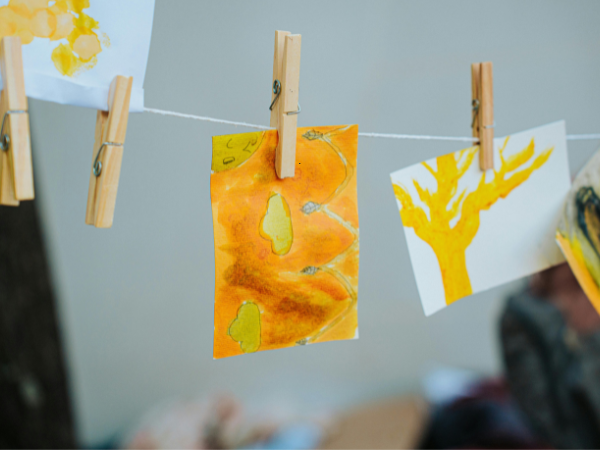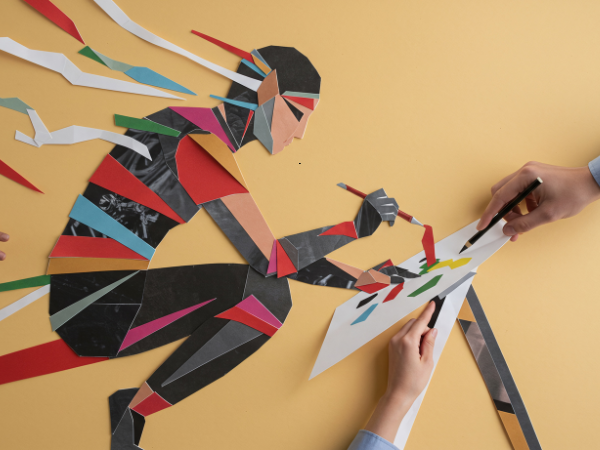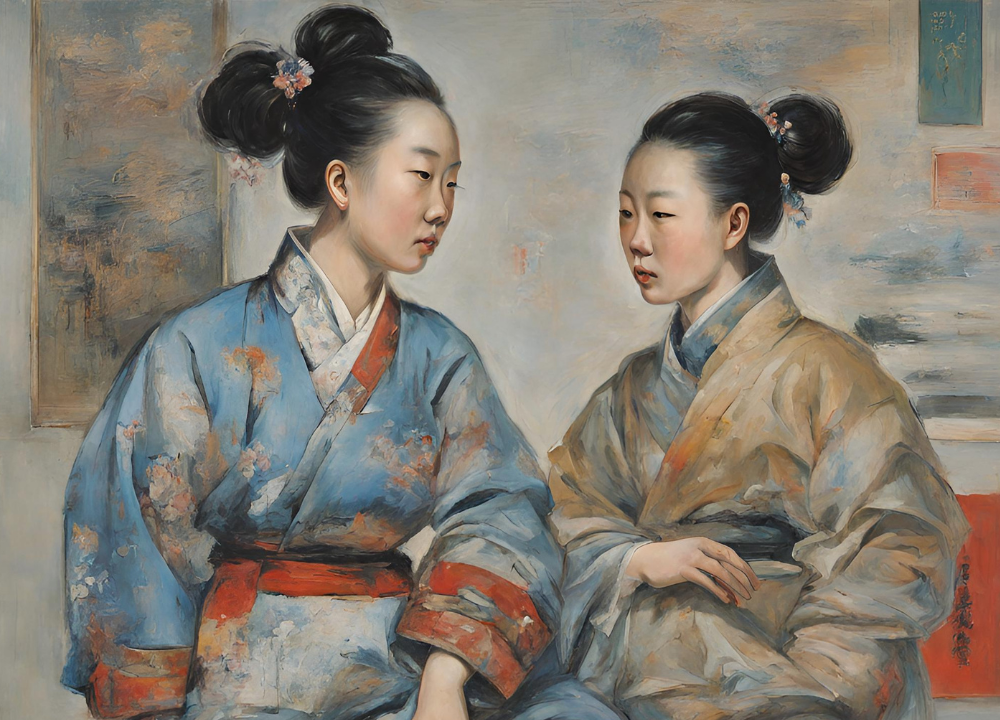Turning mistakes into masterpieces isn’t just for artists—it’s a skill you can use every day. When you learn to see happy accidents as opportunities, your creativity and confidence grow. This article will show you how to embrace your errors and transform them into something truly special.
The Beauty Of Happy Accidents
Mistakes are often seen as failures, but sometimes they turn into something wonderful. The beauty of happy accidents lies in unexpected outcomes that lead to new ideas, creativity, and success. These moments show how errors can become valuable, surprising gifts. They remind us to stay open and curious. Happy accidents teach us that not everything must go as planned to be meaningful or beautiful. They encourage exploration and innovation in art, science, and everyday life. Recognizing these moments helps us see mistakes as opportunities rather than setbacks.
What Makes An Accident Happy
A happy accident happens when a mistake or unintended event results in a positive or useful outcome. It is more than just luck. It involves a few key elements:
- Unexpectedness: The result is surprising and different from the original plan.
- Value: The outcome brings new ideas, improvements, or beauty.
- Acceptance: The person embraces the mistake instead of rejecting it.
- Creativity: The accident inspires further exploration or innovation.
Happy accidents often occur in situations where people experiment freely. For example, artists mixing colors without a strict plan may discover new shades. Scientists testing ideas might find a new formula by accident.
Here is a simple table to compare typical accidents and happy accidents:
| Aspect | Typical Accident | Happy Accident |
|---|---|---|
| Outcome | Negative or no value | Positive or useful |
| Reaction | Frustration or avoidance | Acceptance and curiosity |
| Impact | Setback | New opportunity |
Happy accidents help us see mistakes not as failures but as chances for new discoveries.
Famous Happy Accidents In Art And Science
Many important discoveries started as happy accidents. These moments changed history and inspired creativity.
- Penicillin: Alexander Fleming found this antibiotic when mold accidentally grew on his bacteria plate.
- Post-it Notes: Spencer Silver created a weak glue by mistake, which led to sticky notes.
- Velcro: George de Mestral noticed burrs sticking to his clothes and invented Velcro.
- Blue Jeans: Denim jeans became popular after a tailor used strong fabric for workers’ clothes.
- Jackson Pollock’s Drip Paintings: His accidental paint drips created a new art style.
The table below shows these examples with their accidental cause and outcome:
| Discovery | Accidental Cause | Impact |
|---|---|---|
| Penicillin | Mold contamination | First antibiotic, saved millions |
| Post-it Notes | Weak adhesive | Popular office product |
| Velcro | Burrs sticking to fabric | Fastening invention |
| Blue Jeans | Use of strong denim | Iconic clothing |
| Drip Paintings | Accidental paint drips | New art movement |
These stories show that happy accidents can lead to great achievements. They prove mistakes can inspire creativity and innovation.
Embracing Mistakes Creatively
Turning mistakes into masterpieces is an exciting journey. It means using errors as stepping stones for creativity. Embracing mistakes creatively means seeing errors not as failures but as chances to discover something new. This mindset helps people grow and find unique solutions. Mistakes can spark ideas that no perfect plan could.
Shifting Mindsets Toward Errors
The first step in embracing mistakes creatively is changing how we view errors. Many see mistakes as bad or shameful. This view blocks creativity and learning. Instead, seeing errors as natural parts of the process opens doors.
Ways to shift mindset:
- Recognize errors as learning moments, not setbacks.
- Celebrate small mistakes to reduce fear.
- Focus on progress, not perfection.
- Ask “What can I learn?” instead of “Why did I fail?”
Here is a simple table showing the difference between old and new mindsets:
| Old Mindset | New Mindset |
|---|---|
| Mistakes show weakness | Mistakes are part of growth |
| Fear of failure stops action | Failure is a step toward success |
| Errors cause frustration | Errors inspire new ideas |
Shifting your mindset takes practice. It helps to speak kindly to yourself and be patient. Over time, mistakes will feel less like problems and more like opportunities.
Techniques To Encourage Experimentation
Creativity thrives in an environment where trying new things is welcome. Encouraging experimentation means creating space to explore without fear. This leads to happy accidents that can turn into masterpieces.
Effective techniques to encourage experimentation:
- Set small goals: Try new ideas in easy steps to reduce pressure.
- Use brainstorming sessions: Write all ideas down, even the wild ones.
- Practice playful creativity: Use games or challenges to make trying fun.
- Keep a journal: Record mistakes and what you learned from them.
- Work with others: Share ideas and learn from different views.
Below is a quick guide to create a safe space for experimentation:
| Action | Why It Helps |
|---|---|
| Encourage questions | Promotes curiosity and open thinking |
| Allow mistakes openly | Reduces fear and builds confidence |
| Give positive feedback | Motivates to keep trying |
Using these techniques regularly will make experimentation a habit. The more you try, the better you become at turning mistakes into unique, creative work.
Tools That Foster Serendipity
Tools That Foster Serendipity play a key role in turning mistakes into masterpieces. These tools encourage unexpected results and open doors to new ideas. They help artists and creators enjoy the process without fear of error. By embracing surprises, creators find fresh paths and unique designs. The right tools invite chance and creativity to work together. This section explores both traditional and digital tools that support happy accidents.
Art Supplies That Invite Chance
Certain art supplies naturally encourage experimentation and unexpected effects. These materials can create textures, colors, and patterns that surprise the artist. Using these supplies helps artists relax control and accept imperfections as part of the art.
Here are some popular art supplies that invite chance:
- Watercolors: Their fluidity causes colors to blend unpredictably.
- Acrylic pouring mediums: Create flowing patterns without strict control.
- Spray paints: Allow overspray and drips to add texture.
- Ink splatters: Result in random spots and lines.
- Charcoal: Smudges easily, adding soft, unexpected shading.
These supplies encourage artists to embrace imperfections. The unpredictability of each tool can spark new creative ideas.
| Art Supply | Chance Effect | Creative Benefit |
|---|---|---|
| Watercolors | Colors blend and spread randomly | Creates soft, organic transitions |
| Acrylic Pouring | Paint flows and mixes unpredictably | Forms unique abstract patterns |
| Spray Paint | Overspray and drips add texture | Enhances depth and energy |
| Ink Splattering | Random spots and lines appear | Introduces dynamic movement |
| Charcoal | Smudges soften edges | Generates mood and atmosphere |
Using these tools makes art-making an adventure. Happy accidents become part of the creative story.
Digital Tools For Creative Exploration
Digital tools provide unique ways to explore creativity with chance. Many software programs include features that introduce randomness and surprise. These options let artists experiment without fear of permanent mistakes.
Key digital tools and features that foster serendipity include:
- Random brush strokes: Brushes that vary size, shape, or opacity automatically.
- Generative art programs: Create patterns based on algorithms but with random elements.
- Layer blending modes: Combine layers in unexpected ways.
- Undo and redo functions: Allow quick trial and error without loss.
- Glitch effects: Introduce digital errors for creative distortion.
These features make digital art playful and open-ended. Artists can try new ideas and see surprising results instantly.
| Digital Tool/Feature | Chance Element | Creative Advantage |
|---|---|---|
| Random Brushes | Brush properties vary on each stroke | Generates unique textures |
| Generative Art Software | Uses algorithms with random inputs | Produces complex, unexpected designs |
| Layer Blending Modes | Mix layers in various ways | Creates new color and light effects |
| Undo/Redo | Instant correction and experimentation | Encourages risk-taking |
| Glitch Effects | Introduces digital noise and errors | Adds texture and surprise |
Digital tools invite artists to play and explore freely. Serendipity becomes part of the creative journey.
Case Studies Of Masterpieces Born From Mistakes
Mistakes often carry a negative weight, but history shows they can lead to unexpected beauty and innovation. Case studies of masterpieces born from mistakes reveal how accidents in art and creativity have produced some of the most admired works. These stories inspire us to embrace errors as part of the creative process. Each example highlights how unplanned moments can spark new directions and ideas. Below, explore famous paintings, sculptures, music, and literature that owe their fame to such happy accidents.
Iconic Paintings And Sculptures
Many famous artworks began with unintended actions or errors. These ‘happy accidents’ added unique character and depth to the pieces. Sometimes, artists noticed unexpected effects and decided to keep them, turning flaws into features.
- The Blue Poles by Jackson Pollock: Pollock’s random drips and splatters, initially seen as chaotic, created dynamic compositions full of energy.
- Mona Lisa’s Smile by Leonardo da Vinci: Some experts believe the slight smudge on the lips gave Mona Lisa her mysterious smile.
- The Thinker by Auguste Rodin: Originally part of a larger work, this sculpture gained fame alone after an accidental break separated it from the rest.
Artists sometimes used mistakes as creative tools:
| Artwork | Mistake | Result |
|---|---|---|
| Starry Night – Vincent van Gogh | Swirling brush strokes created by an unsteady hand | Iconic expressive sky full of movement |
| The Persistence of Memory – Salvador Dalí | Unexpected melting clock shapes | Symbolized fluidity of time, key surrealist image |
These examples show how mistakes bring originality and emotion. They remind us that art is often about discovery, not perfection.
Innovations In Music And Literature
Creative fields like music and literature also thrive on mistakes. Sometimes, a wrong note or a typo leads to new styles or stories. These errors can challenge traditional rules and open fresh paths.
- Music: The famous song “Yesterday” by The Beatles reportedly started from a simple melody that Paul McCartney dreamed. He initially thought it was a mistake or copied tune but turned it into a classic.
- Jazz improvisation: Many jazz musicians use accidental notes and rhythms to create unique sounds. These ‘mistakes’ are embraced as part of the art form.
- Literature: Some authors find inspiration in typos or unexpected phrases. For example, Lewis Carroll’s “Jabberwocky” uses playful nonsense words, partly born from linguistic experiments and errors.
Here is a quick summary:
| Field | Example | Impact of Mistake |
|---|---|---|
| Music | “Yesterday” by The Beatles | Dreamed melody initially thought to be mistaken |
| Literature | “Jabberwocky” by Lewis Carroll | Playful language from experiments and errors |
Mistakes encourage artists and writers to explore new ideas. These happy accidents prove that creativity grows from unexpected moments.
Cultivating A Culture Of Happy Accidents
Turning mistakes into masterpieces is not just about chance; it is about creating an environment where unexpected outcomes are welcome. Cultivating a culture of happy accidents means fostering a space where creativity thrives through openness to errors and surprises. This culture allows individuals to explore ideas freely, without fear of failure. It encourages learning and growth, transforming setbacks into stepping stones for innovation. Embracing this mindset can lead to unique and inspiring results that would not emerge in rigid or overly controlled settings.
Encouraging Risk In Creative Spaces
Taking risks is essential for creativity. In spaces where people feel safe to take chances, new ideas flourish. Encouraging risk means allowing experimentation without harsh judgment. It means valuing the process over the product. This approach helps uncover fresh perspectives and unexpected solutions.
- Promote open communication: Let everyone share ideas without fear.
- Celebrate attempts: Praise efforts, not just successes.
- Remove fear of failure: Make mistakes part of the learning journey.
- Provide flexible resources: Tools and time to explore new methods.
Here is a simple table showing the difference between risk-averse and risk-friendly creative spaces:
| Risk-Averse Space | Risk-Friendly Space |
|---|---|
| Focus on rules and guidelines | Focus on exploration and flexibility |
| Fear of making mistakes | Mistakes seen as learning |
| Limited idea sharing | Open idea sharing encouraged |
| Success defined by perfection | Success defined by growth |
Encouraging risk creates a dynamic environment. It allows happy accidents to happen naturally. This leads to rich creative outcomes and stronger teamwork.
Building Resilience Through Failure
Failure is often seen as negative. Yet, it builds strength and resilience in creative work. Resilience means bouncing back quickly from mistakes. It helps individuals keep trying until they find success.
Building resilience requires:
- Accepting failure: View mistakes as normal and useful.
- Reflecting on errors: Understand what went wrong and why.
- Adapting strategies: Change approach based on lessons learned.
- Maintaining a positive attitude: Stay hopeful and motivated.
Here is a list of ways leaders can support resilience:
- Share stories of famous failures and successes
- Encourage regular feedback and discussion
- Model calm responses to setbacks
- Provide resources for skill development
Resilience turns failures into opportunities. It helps creative teams stay confident and productive. Happy accidents become stepping stones to better ideas and stronger results.




